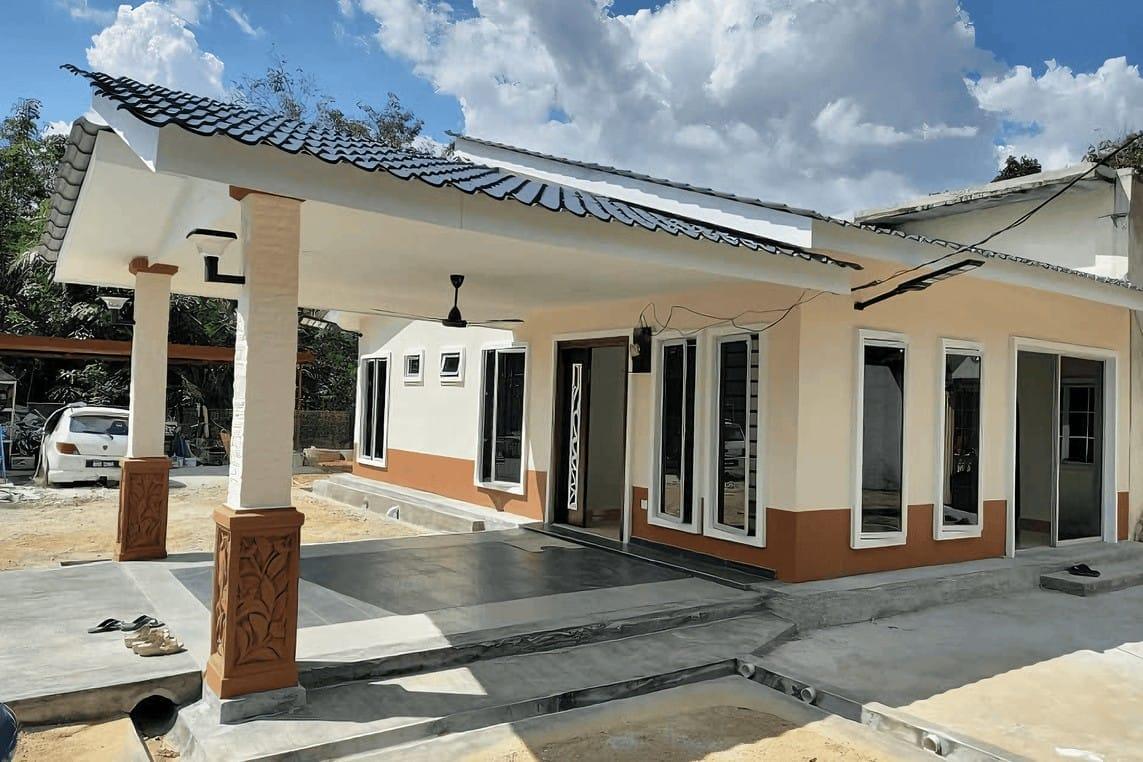Understanding the Importance of Earthworks and Foundations in House Construction
In the quiet hum of a bustling construction site, where machinery rumbles and workers diligently navigate their tasks, two unsung heroes quietly lay the groundwork for every solid structure: earthworks and foundations. While the final aesthetic of a house may steal the spotlight, it is the preparation beneath the surface that truly determines its longevity, stability, and safety. Earthworks encompass the intricate processes of excavating, grading, and managing soil, while foundations serve as the bedrock upon which the entirety of a building rests.
As prospective homeowners or curious onlookers, it’s easy to be captivated by the sight of walls rising and roofs taking shape, yet an understanding of the preliminary steps reveals an essential dimension of construction often overlooked. The delicate interplay between the earth and a building’s foundation dictates how well a house will withstand the test of time, environmental forces, and the wear and tear of daily life.
In this article, we will delve into the critical roles that earthworks and foundations play in house construction. We will explore the fundamental principles that guide these processes, the intricacies of soil behavior, and the various methods utilized to ensure that a home stands strong amidst changing conditions. Ultimately, we aim to highlight the significance of these foundational elements—not only as practical necessities but as the cornerstone of crafting safe and durable living spaces. Join us on this journey of discovery, as we unearth the importance of what lies beneath our feet.
The Critical Role of Earthworks in Building Stability
Earthworks lay the groundwork for any construction project, playing a crucial role in ensuring that a building has the necessary support to withstand the tests of time and nature. The process involves the excavation, moving, and preparing of soil to create a stable base. Factors such as soil type, moisture content, and load-bearing capacity can significantly affect the structure’s integrity. Therefore, having a thorough understanding of the underlying geology is essential before even breaking ground. By assessing these elements, builders can create designs that accommodate the natural landscape rather than fight against it.
During the earthworks phase, several techniques are employed to enhance stability, including:
- Compaction: This process increases soil density, reducing settlement and enhancing load-bearing capabilities.
- Grading: Altering the landscape to control drainage can prevent water accumulation that may weaken the foundation.
- Soil stabilization: Chemical or mechanical methods can be used to improve the quality of the soil and increase its strength.
The right balance of earthworks leads to a foundational structure that not only supports the weight of the house but also mitigates potential hazards. Consider the following table, highlighting common soil types and their respective characteristics in relation to construction:
| Soil Type | Load Bearing Capacity | Preferred Stability Techniques |
|---|---|---|
| Sandy Soil | High | Compaction, Drainage Control |
| Clay Soil | Moderate | Grading, Soil Stabilization |
| Loam Soil | Moderate to High | Minimal Intervention Needed |

Foundations Matter: An In-Depth Look at Types and Their Applications
When it comes to house construction, the foundation is often regarded as a critical element that sets the stage for the entire structure. Choosing the right type of foundation depends on various factors, including soil type, building design, and local climate conditions. Common foundations include:
- Shallow Foundations: Ideal for structures with light loads, these foundations are placed near the surface of the ground. Examples include spread footings and slab-on-grade foundations.
- Deep Foundations: Used when surface soils cannot support the weight, deep foundations such as piles and drilled shafts transfer the load to deeper, more stable layers of soil or rock.
- Raft Foundations: Also known as mat foundations, these spread the load over a large area, making them suitable for sites with weak or uneven soil.
Each foundation type has specific applications based on the unique aspects of the build environment. For instance, shallow foundations are less expensive and quicker to install; however, they are limited by soil strength. On the other hand, deep foundations are more effective in heavy, tall structures but require significant investment in both time and materials. A rafter foundation is particularly useful in areas prone to flooding, providing stability while minimizing water damage risk.
The choice of foundation significantly impacts the longevity and durability of a house. To aid builders and homeowners in making informed decisions, the following table summarizes critical factors to consider:
| Foundation Type | Load Capacity | Installation Time | Cost |
|---|---|---|---|
| Shallow | Low to Moderate | Quick | Low |
| Deep | High | Extended | High |
| Raft | Moderate | Medium | Medium |
A thorough understanding of different foundation types and their applications ensures that homes are built on a stable base, reducing the risks of settlement issues, cracks, and costly repairs down the line. Evaluating these foundational aspects early in the construction process can save not only financial resources but also time, fostering a smoother building experience overall.

Soil Testing Essentials for Safe and Secure Construction
Ensuring the integrity of any construction project begins with a comprehensive understanding of the underlying soil conditions. Conducting soil tests offers invaluable insights into various factors that influence the safety and durability of a structure. These tests evaluate soil composition, moisture levels, and stability, allowing engineers to identify potential risks such as settlement, liquefaction, or expansive soils. By gathering precise data, builders can make informed decisions on the type of foundation required, ultimately safeguarding the project from unforeseen complications.
Soil testing encompasses several methods, including standard penetration tests, cone penetration tests, and laboratory analysis. Each method provides different layers of information regarding the soil’s physical and chemical properties. For instance, standard penetration tests measure the resistance of the soil during penetration, revealing its density and stability. A comprehensive analysis of these tests enables a tailored approach to foundation design, ensuring it is resilient enough to withstand anticipated loads and environmental conditions.
Additionally, understanding soil characteristics aids in the selection of appropriate construction methods and materials. For example, if soil conditions indicate high water tables, builders may need to implement drainage solutions or consider deep foundation systems. Below is a simple table showcasing common soil types and their implications in construction:
| Soil Type | Implications for Construction |
|---|---|
| Sandy Soil | Good drainage; risk of erosion |
| Clay Soil | High shrink-swell potential |
| Loamy Soil | Ideal for construction; balanced properties |
| Silty Soil | Moderate drainage; potential stability issues |

Best Practices for Effective Earthwork and Foundation Installation
Ensuring proper earthwork and foundation installation requires a thorough understanding of the site and its characteristics. This includes analyzing soil types, moisture levels, and existing drainage systems. Geotechnical investigations are essential for identifying potential problems and informing design decisions. Adequate preparation can prevent costly issues later in construction. Following these steps can enhance the effectiveness of the project’s foundation:
- Conduct soil tests to determine load-bearing capacity and shrink-swell potential.
- Implement proper drainage systems to divert water away from the foundation.
- Maintain soil stability throughout the construction process to avoid settlement issues.
Another critical aspect is the selection and formulation of materials used in foundations. The mix and quality of concrete play a pivotal role in the foundation’s longevity and durability. Opting for high-grade materials ensures that the foundation withstands various environmental pressures. Here’s a simple table to illustrate key foundation materials and their properties:
| Material | Properties |
|---|---|
| Concrete | Strong, durable, and resistant to moisture. |
| Reinforced steel | Increases tensile strength; prevents cracking. |
| Gravel | Promotes drainage; aids in soil stability. |
Regular monitoring and inspections throughout the earthwork and foundation installation phases are vital. Engaging qualified professionals and using appropriate equipment can greatly enhance the quality of work. Practicing a systematic approach through diligent documentation and adherence to codes ensures that the foundation is structurally sound and can support the intended load. To achieve the best results, it’s critical to:
- Schedule inspections at different construction stages.
- Document all processes and modifications.
- Ensure compliance with local building codes and regulations.
Q&A
Q&A: Understanding the Importance of Earthworks and Foundations in House Construction
Q1: What exactly are earthworks and foundations in the context of house construction?
A1: Earthworks refer to the excavation, grading, and movement of soil to prepare a site for building. This includes tasks like digging trenches for foundations and leveling the ground. Foundations are the structural elements that support a house, distributing its weight to prevent settling and ensuring stability and safety over time. Together, they form the crucial first step in construction.
Q2: Why are earthworks considered a critical preliminary step before laying down a foundation?
A2: Earthworks are essential because they create a stable base for the foundation. If the soil is not adequately prepared—compacted, graded, and free of debris—the foundation can shift, settle unevenly, or even crack. A well-executed earthworks process ensures proper drainage and prevents future structural issues. Think of it as laying the groundwork for what will soon become the heart of your home!
Q3: What types of soil can affect the foundation, and how?
A3: Different soil types—clay, sand, silt, and gravel—affect how a foundation behaves. Clay is prone to expansion and contraction with moisture changes, which can lead to foundation movement. Sandy soil, while providing good drainage, can be unstable if not compacted properly. Knowing the characteristics of the site’s soil is imperative for selecting the appropriate foundation type to ensure longevity and stability.
Q4: How do earthworks impact environmental sustainability in construction?
A4: Thoughtful earthworks can minimize environmental disturbance and promote sustainability. Techniques like contour grading help manage water drainage, reducing erosion and promoting natural water cycles. Additionally, responsible soil management can prevent pollution and protect local ecosystems. By incorporating sustainable practices during earthworks, builders can create a more eco-friendly foundation for their projects.
Q5: Can poor earthwork and foundation practices have long-term consequences?
A5: Absolutely. Negligent practices can lead to significant problems over time, such as uneven settling, cracking walls, or even structural failure. The costs of these issues often outweigh the initial investment in proper earthworks and foundation techniques. It’s a classic case of “an ounce of prevention is worth a pound of cure.” Investing time and resources upfront ensures a solid home for years to come.
Q6: What should homeowners look for when hiring a contractor for earthworks and foundations?
A6: Homeowners should seek contractors with proven expertise in site preparation and foundation work. Look for reviews, references, and examples of previous projects. It’s also wise to ensure they understand local soil conditions and have appropriate insurance. A reliable contractor will help assess your site, recommend the best practices, and ensure compliance with local building codes.
Q7: Is it possible for homeowners to contribute to the earthworks and foundation preparation process?
A7: While major earthmoving tasks and foundation work should be handled by professionals, homeowners can assist by clearing the site of debris, ensuring accessibility for heavy machinery, and discussing soil conditions with contractors. Being informed about the process helps homeowners understand and appreciate the importance of these foundational steps in constructing a safe and sturdy home.
Q8: why should future homeowners prioritize understanding earthworks and foundations?
A8: Understanding earthworks and foundations is vital for anyone looking to build a home. These steps are fundamental to the overall durability, safety, and stability of the structure. By appreciating their importance, homeowners can make informed decisions that will ensure their investment stands strong against the test of time and nature. A solid foundation truly leads to a sturdy dream home!
In Retrospect
As we conclude our exploration of the vital roles that earthworks and foundations play in house construction, it’s clear that these seemingly unglamorous elements form the backbone of any structure. Just as a painter begins with a blank canvas, constructing a home demands careful preparation beneath the surface, where the invisible forces of nature collide with human ingenuity.
Understanding the importance of these foundational steps is not merely an academic exercise; it’s an essential cornerstone for anyone looking to build a safe, enduring structure. From the meticulous planning involved in site selection and soil analysis to the precision required in laying a solid foundation, every detail contributes to the integrity of your home.
As we move forward into our own building projects or support the efforts of others, let us remember that a sturdy house is only as reliable as the earth upon which it stands. In the intricate dance of construction, the earthworks and foundations may not steal the spotlight, but they undoubtedly set the stage for a lifetime of security and comfort. Armed with this understanding, we can appreciate the deep-rooted connection between our homes and the land they inhabit, fostering a greater respect for the craftsmanship that lies beneath our feet.



